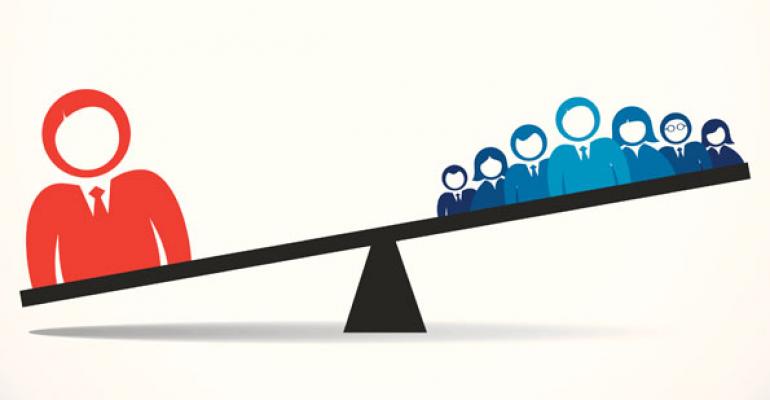
New tax law supercharges existing inequality trends
A brand-new study, the 2018 World Inequality Report, shows in rich and convincing detail why the new Republican tax law makes a bad situation worse.
The tax law Donald Trump and Congressional Republicans have been pushing for months is now a done deal. It will increase economic inequality significantly amid the-decades-long trend toward an ever more unequal share of income and wealth documented in the new report.
The Trump/GOP tax law is a sweetheart deal for those who don’t need any more money—corporations awash with cash, the very wealthy with stock portfolios the value of which have soared with the Wall Street surge, a tiny group of inheritors of huge fortunes who did nothing to earn them but will now enjoy a bigger windfall with the elimination of the estate tax.
The rest of us will get a raw deal—in the best of cases: a meager and temporary tax cut. These provisions were put in expressly to camouflage and to try to sell the upwardly-skewed tax law. Moreover, unlike the huge cuts for corporations and the axing of the estate tax, which are permanent, tax breaks for the masses go away in a few years.
But the rawest deal of all is reserved for middle income families who live in places that collect sufficient taxes to adequately finance education, health and other needs. Those families will no longer be able deduct state and local taxes. It’s payback for citizens of states with progressive policies and Democratic loyalties.
I led this piece with the new tax law because finally we know what is in it and that it will pass. That’s the breaking news. But the main focus of this column is the new study by Thomas Piketty and other top economists that shows the sharp trend toward inequality that has been underway long before Trump and the Republicans came along to supercharge it.
Inequality was already great in 1980 when the top 1 percent of earners took home 11 percent of income, or more than ten times their share. The bottom 50 percent meanwhile earned 21 percent of all income, two and a half times less than their share.
What has happened since 1980? Leading economists and sociologists of the 1970s and 1980s predicted incomes would tend to equalize further. Instead, the opposite has happened. Today the lower 50 percent receive only 11 percent of the income while the top 1 percent take more than 20 percent. The richest now get more than twenty times their share and the poorest 50 percent, barely one fifth of theirs.

Why is this happening? Conservative economists have always tried to portray the capitalist economy as a product of inevitable supernatural or natural forces: Adam Smith’s invisible hand (of God) or the iron laws of the market touted by later and lesser apologists of the system.
Comparisons with the wealthy capitalist economies of Europe belie such convenient rationalizations. Inequality in Europe has risen much less than in the United States. Today in Europe the bottom 50 percent of earners take about 22 percent of income, close to twice as much as in the United States. And the top 1 percent in Europe grab 12 percent of income, slightly more than half as in the United States.
What explains these differences? Philosophical starting points, public policies, and spending priorities. Capitalism tends to increase inequality, whether in Europe or the United States. In the decades after WWII, both the United States and Europe tried to moderate this tendency through public policies such as progressive income taxes, by massive funding for education for a broad sector of the population, and with the minimum wage and income support for the lowest earners. Europe basically has continued these policies while making their “social state” only slightly less generous.
This country did the exact opposite. In the United States, welfare was abolished and the “welfare state” nearly pulverized. Taxes on the rich have been going lower and lower, making the tax system less progressive. Education funding, especially funding for higher learning crucial for upward mobility, has been slashed. The value of the minimum wage in real dollars has sunk.
The Inequality Report makes the results of these policy choices clear. In the United States, the 24 years from 1980 to 2014, income for the poorest 20 percent grew only by 4 percent. For the richest .001 percent, it grew by 600 percent.
We don’t have to organize society this way that pampers the rich and pummels the middle class and the poor. Nature doesn’t compel it. The Europeans don’t do it. But since the 1980s, we do organize society increasingly this way. The Robin-Hood-in-Reverse policies initiated by Ronald Reagan have never been more dominant than under Donald Trump, as the soon-to-be-in effect tax law demonstrates.
Extensive research has shown that high levels of inequality diminishes happiness, affects health and life expectancy, and promotes crime. Inequality kills.
The question now becomes: How much inequality and social injustice will the American people take before they rebel?

